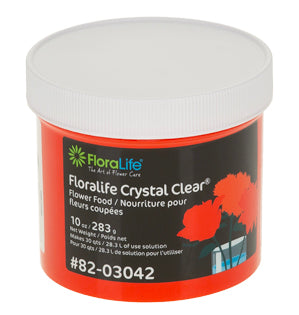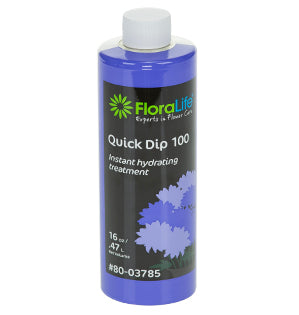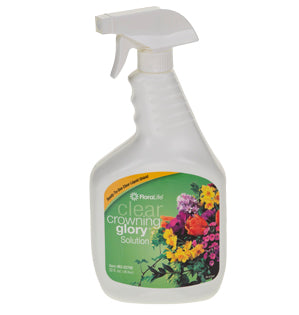Bespoke Bridal Bouquet
In this video how-to demonstration Leanne creates a dramatic Bespoke Garden Styled Bridal Bouquet featuring flowers from Florabundance.com. There are many techniques for creating a bridal bouquet. A currently popular technique is the use of a floral netting or chicken wire armature for the bouquet. This technique is a bit of a challenge at first, but with practice it becomes easy. This is a method that you will want to master and add to your skills library.
Video Transcription
Welcome to the Flower School.com video library. I'm Leanne Kesler, director of the Floral Design Institute and today I'm here to share with you a fabulous bridal bouquet, featuring flowers from Florabundance.com. So many varieties, so many great blooms and so much fun to create.
I had so much fun as I was sorting out what flowers I wanted to use for this video. I started by sorting by color. So if you go onto the website, Florabundance.com, you can sort it by variety, by color, and I started with color. And then started just scrolling down. And I knew I wanted roses and I gathered several. This one's kind of a new one to me, this really soft lavender, Eloquence. And then Garnet Gem, to spray, isn't that gorgeous? Blueberry, the standard rose and then Yves Piaget, a garden rose, super fragrant, super fabulous. Then as I was thinking, well, what else would I want? What pops into mind, but peonies. Had to do the peony. Then once I had the classics, I started looking at seasonal treasures. Sweet peas, scabiosa, viburnum, and look at this ranunculus, it's an import, absolutely amazing.
The flowers have all been processed. They're hydrated. I've used flower food, so they're going to be sturdy and fabulous. So, then it's time for the base mechanics. And you've seen so many different bridal bouquet techniques. Another one that we're using is the floral netting. And to do this, I just cut a piece that's about seven inches by seven inches. That seems to be a nice size. If you want bigger, you can have a great big, drop-dead, gorgeous bouquet, or you can do something a little more petite, which is what I'm going to do today. Just folding it into a circle or a disc and then tucking the ends. Making sure that the ends are all inside, so that they don't poke anybody. And do the same thing on the opposite, creating a nice, oval armature.
In this bouquet, the focus is on the flowers. Foliage is secondary, so once everything is fully hydrated, I go back and remove all the leaves. You don't want to do that till it's hydrated, because they help the hydration. The thorns are already gone, shorten them down a little bit. With the lavender, Eloquence, fun little technique. Reach inside, opening it out a little more, and then pull out the center pedals and it makes it look like an old fashioned garden rose. You can see the inside of the bloom. Isn't that fun? But removing all of the leaves, so that when I go to work, all I have is the flowers. Then, a base of the design, viburnum. Aren't those berries fabulous? I'm using this as the base and I'm just going to take the armature and set it in place. Now, it's not fastened, but then, when I go back and add a flower, going through the armature, and down, that will fasten it in place.
By tucking flowers down close, right against the armature, it covers the mechanics very, very quickly. Just feeding it through. Capturing it with your hand. Then adding another. Feeding it in. And you can create a delicate bouquet. It doesn't have to be enormous to be beautiful. Some brides are looking for something a little more tailored, a little more compact, but they still want the focus on the flowers. Using the larger roses first, filling in my accent area, you can see the color starts being so grand. And I can come back with the smaller blooms, the spray roses, and then come out, finding the perfect little hole, there we go. Adjusting their heads and feeding it in and then the lavender, coming up a little taller over the top, since they're light weight and delicate. Filling in top, back and front. Got this gorgeous peony. Question is, where do I want it? And I think I want it right over here, but angled a little more to the front. So, pulling it back out. It's going to be so bold. Want it to be part of the accent and then coming in with a few more of the beautiful lavender.
Once you have your base mechanics concealed and the body of the design, you can start adding softness, interest, a little bit of movement, bringing in tendrils to create horizontal line. And sweet pea tendrils are so fabulous. They add softness. Just feeding it in. Making sure that you pay attention to where it goes, so it guides your eye across. Bring in one from the opposite side. Pulling it from the bottom. Creating movement from side to side in the design. Then maybe some lightness. Bringing in buds from the scabiosa, can pull your roses up a little bit. Find a little spot. Feeding it in. Shadowing it behind. And then bringing in a bloom. Finding a spot so that I don't pierce through my roses. I want it to go down between them, not through them. There we go. Adding that dark, little color right in there and then adding one more. Grouping them. And as you're working, if you stand in front of a mirror, you can see where your flowers are going. See what it looks like from the front and then double check from the sides and the back.
As I finish, I bring in a few more sweet peas, because that soft, pink color will pick up the pink from the peony. Feeding it in. Drawing it across to the side. And, of course, I don't want for it to forget the beautiful ranunculus. Finding a perfect, little spot that centers it so that it shows well. So many different flowers, so many different colors, absolutely gorgeous.
When you're satisfied with your flower placement, once again, look at it from all the sides, determine if you'd like to add another bloom. Maybe a few more of the beautiful spray, tucked down low to fill in that area and then to cover your base mechanics. There's still a little bit of the netting showing. Beautiful lamb's ear. Just taking it, setting it up alongside and that will totally cover and give a nice, soft, velvety finish to the bouquet that makes it so grand for the bride to hang onto. You can see you just wrap it around. You can go both directions, some going in and then come back out, so it's pretty on both sides.
To secure, a bit of raffia. Just lashed around, above your hand, making sure that it's nice and snug, so it holds it all together. Then just lay it down, tie it in a knot and cut your stems to length.
Once again, ribbons are on trend. And it can totally change the look of your bouquet. You could use a variety of ribbons. In the pantone color of the year, ultraviolet. Looks one way. Or, hand-dyed ribbon in pinks and roses, again, changes the whole look. Or cross-dyed, gives it a very antique look, almost vintage. So many ways, all would be beautiful.
I had such fun choosing these flowers at Florabundance.com and then, thanks Debbie, for pulling such a great assortment. She even sent me a picture ahead of time, so I could see what was on its way and start making my plans. You can see what they have to offer at their website, Florabundance.com.
For more creative inspiration, check out our site, Flower School.com. The website contains hundreds of floral design how-to videos, floral design classes, online floral classes and DIY Flowers.
If you've got questions, you can reach us through there, or pick up the telephone and give us a call at 503-223-8089, and of course, I'd love to see what you create. Take a photo. Send it to my personal email, or better yet, post it on social media and tag #FloralDesignInstitute, so that we all can see. Because now it's your turn. Have fun and do something you love.





